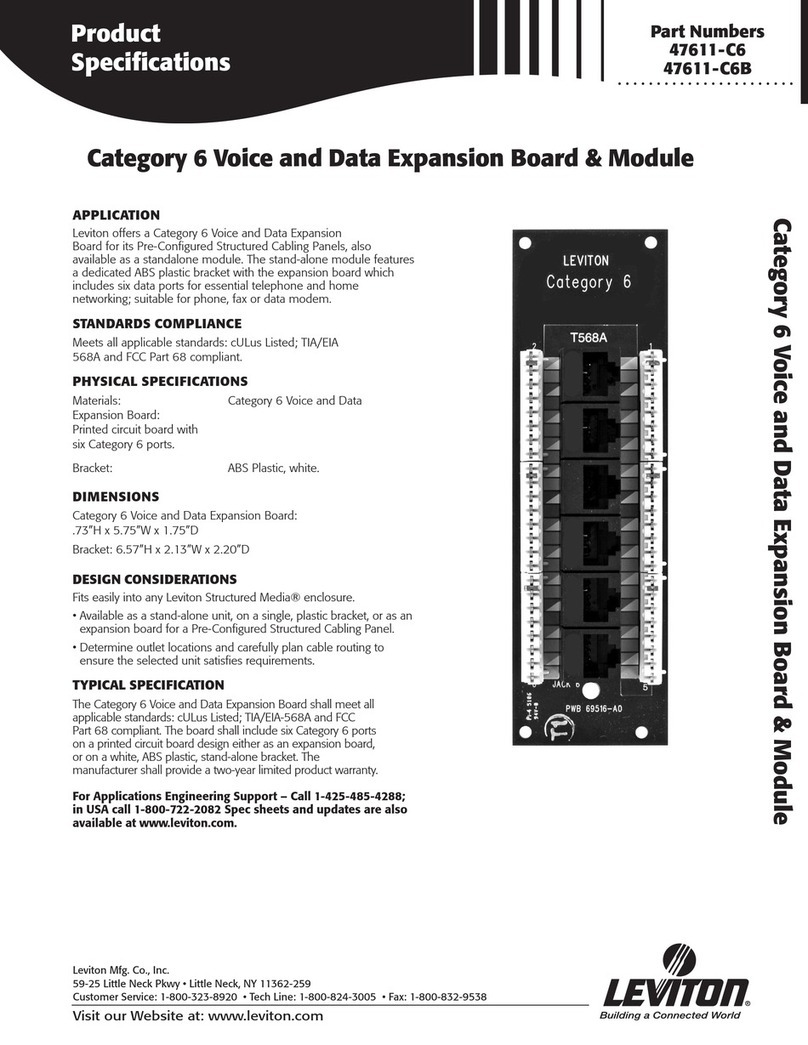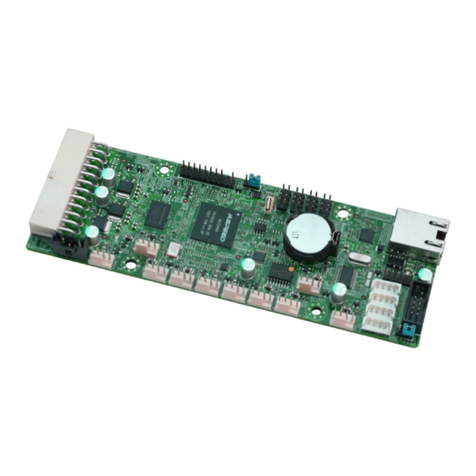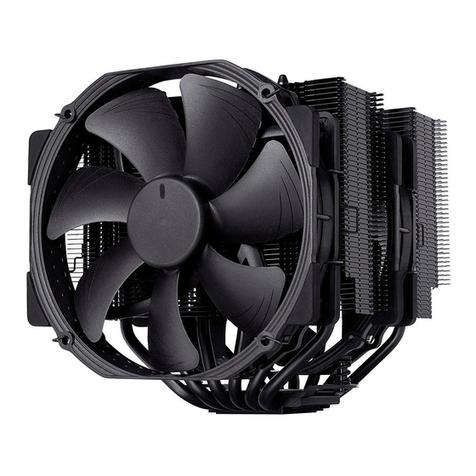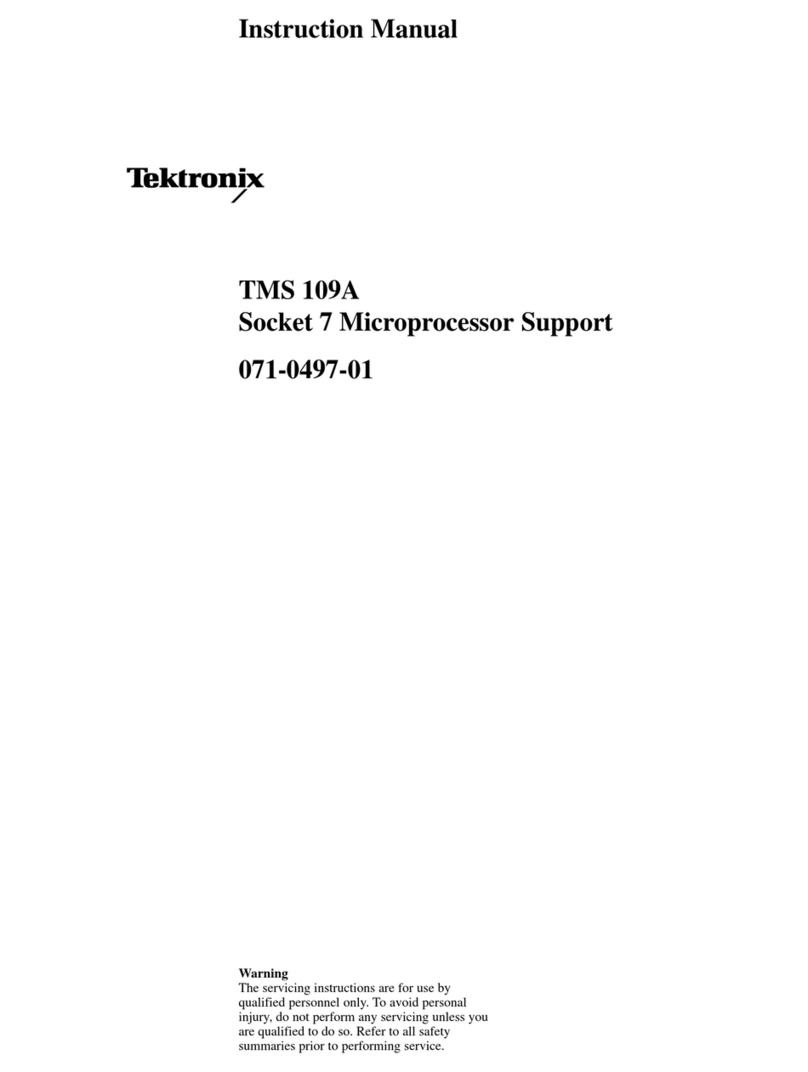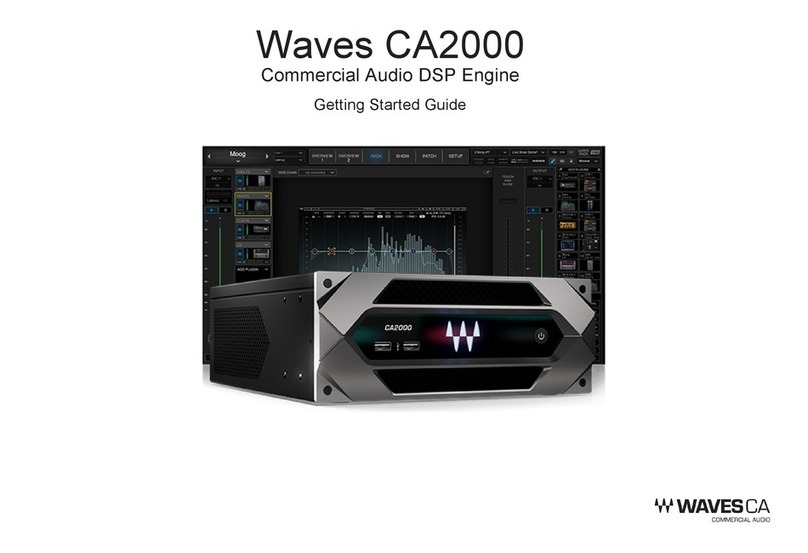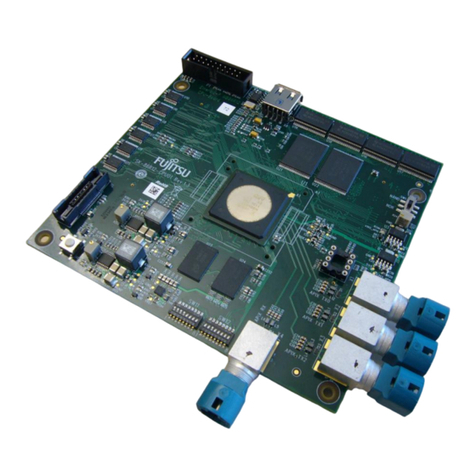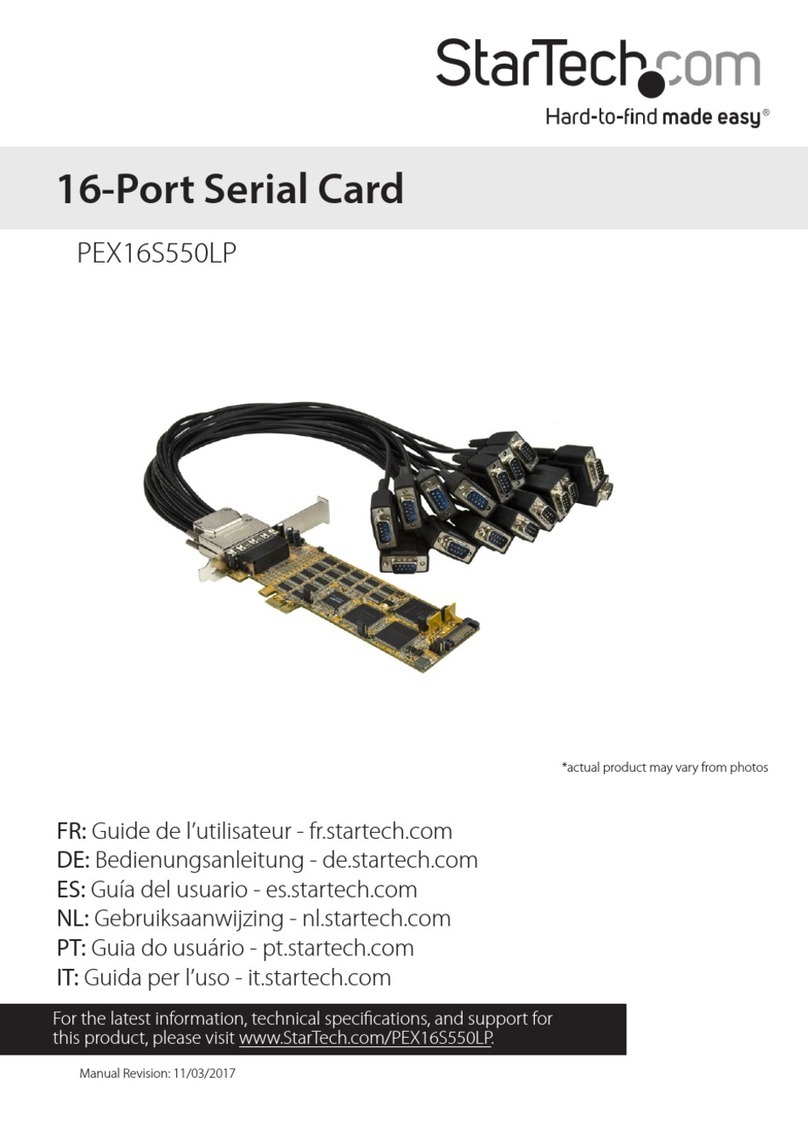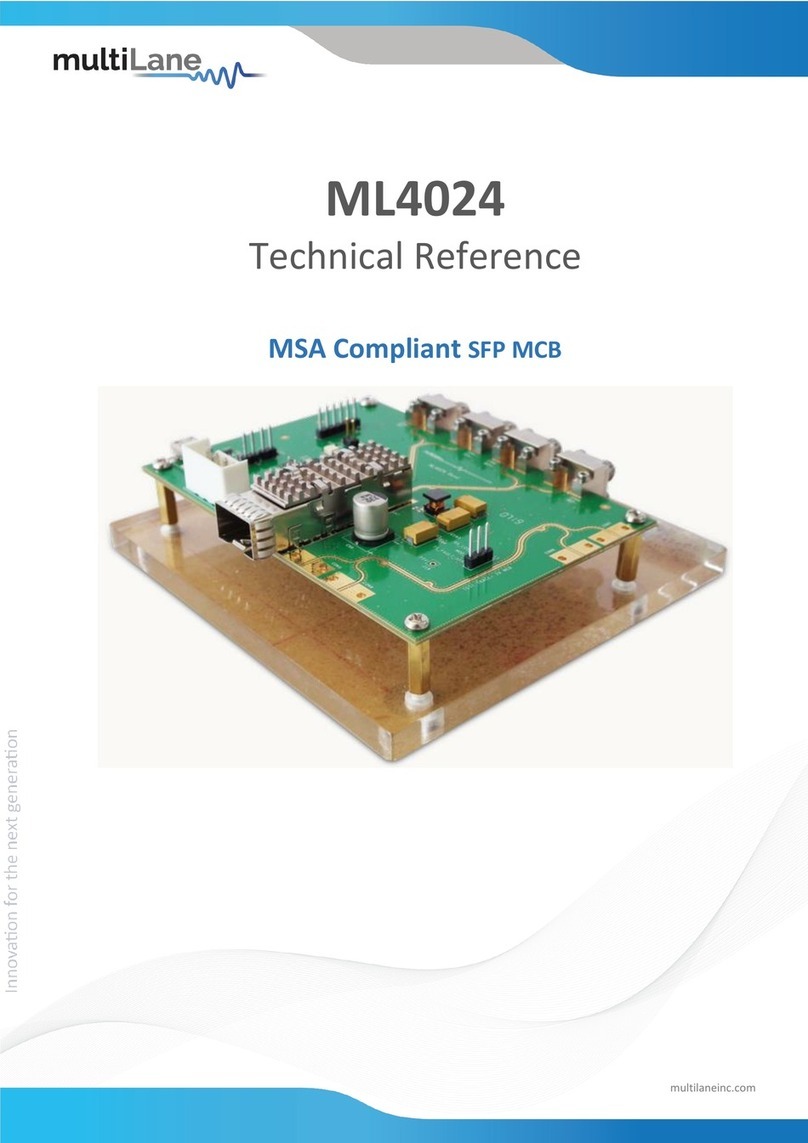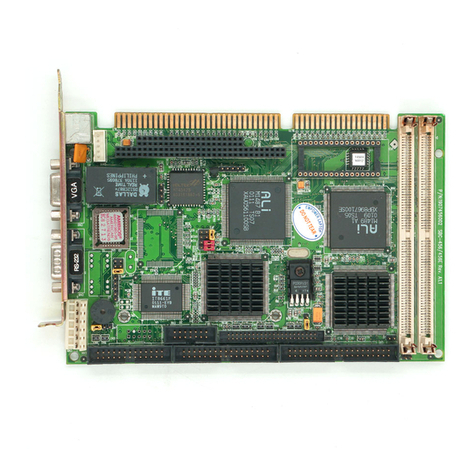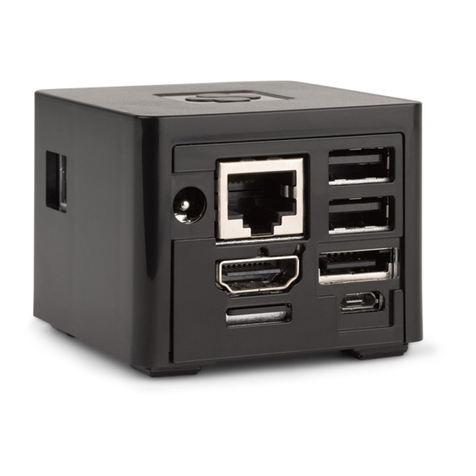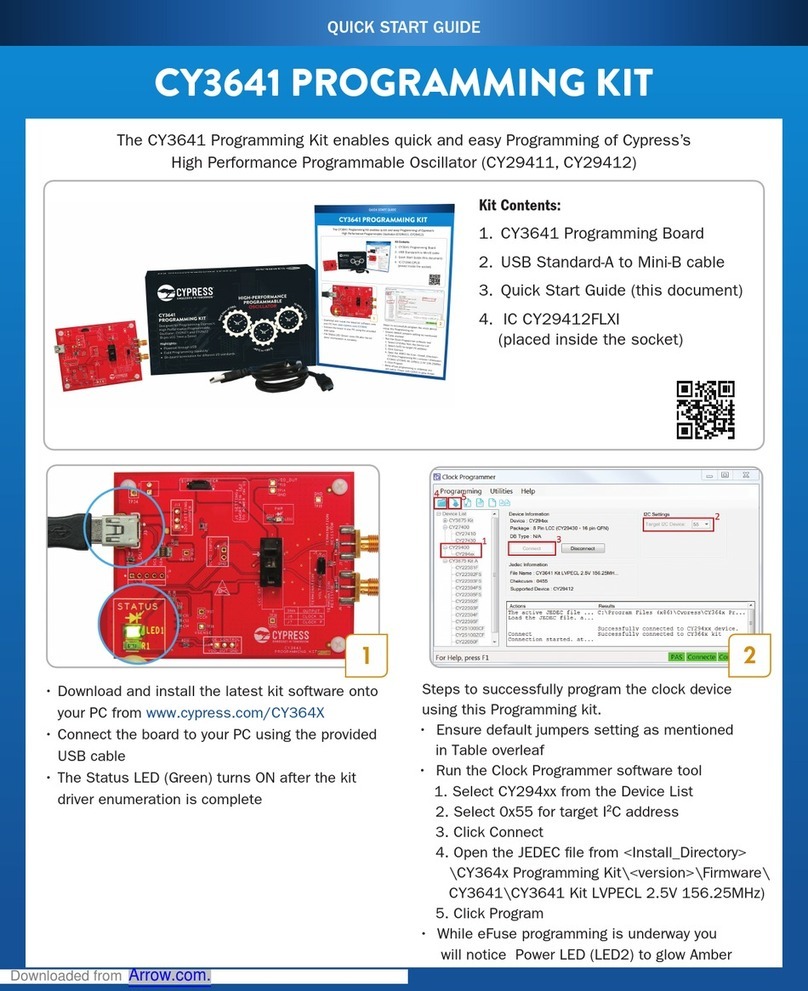Nordic Semiconductor nRF5340 User manual

nRF5340 Audio DK Hardware
v1.0.0
User Guide
4406_708 / 2023-01-12

Contents
Revision history.................................. iii
1Introduction................................... 4
2Kit content.................................... 7
3Hardware description.............................. 8
3.1 Block diagram .................................. 8
3.2 Hardware figures .................................8
3.3 nRF5340 SoC .................................. 10
3.4 Pin maps ................................... 10
3.5 Audio codec .................................. 12
3.6 Connector interface ............................... 13
3.7 Microphone .................................. 14
3.8 LEDs and buttons ................................ 14
3.8.1 Switches .................................. 15
3.9 Requirements for external flash memory DFU .................... 15
3.10 Interfaces ...................................16
3.10.1 Test points ................................ 16
3.10.2 Solder bridge overview ........................... 18
3.11 Hardware limitations .............................. 19
Glossary ..................................... 21
Recommended reading.............................. 23
Legal notices................................... 24
4406_708 ii

Revision history
Date Description
2023-01-12 First release
4406_708 iii

1Introduction
The nRF5340 Audio Development Kit (DK) is a hardware development platform that demonstrates the use
of the nRF5340 Audio application.
The DK is the recommended platform for Bluetooth® Low Energy Audio products and contains everything
needed to start development. The DK is configurable and can function as a Universal Serial Bus (USB)
dongle to send or receive audio data from a computer. It can also function as a business headset, a
broadcast receiver, or a True Wireless Stereo (TWS) earbud. For most use cases, we recommend using two
or more DKs.
The three main components of the DK are the nRF5340 System on Chip (SoC), nPM1100 Power
Management Integrated Circuit (PMIC), and Cirrus Logic's CS47L63 Audio DSP. The CS47L63’s high-
performance DAC and differential output driver are optimized for direct connection to an external
headphone load. It is perfect for earbuds and direct speaker output.
The new Low Complexity Communications Codec (LC3) is also available and can be used with this DK.
It replaces Bluetooth Classic’s Low Complexity Subband Codec (SBC). The LC3 codec has superior audio
quality compared to SBC, even at about half the wireless data rate. This low data rate is a key factor in
minimizing the power consumption of your products.
Key features
• Nordic Semiconductor’s nRF5340 Bluetooth LE or multiprotocol SoC
• Nordic Semiconductor’s nPM1100 power management SoC
• CS47L63 AD-DA converter from Cirrus Logic dedicated to TWS devices
• Stereo analog line input
• Mono analog output
• On-board Pulse Density Modulation (PDM) microphone
• Computer connection and battery charging through USB-C
• Second nRF5340 SoC that works as an onboard SEGGER debugger
• SD card reader (no SD card supplied)
• Five user-programmable buttons and LEDs
• DK contains several voltage and current monitors. This enables higher accuracy current measurement
using dedicated current measurement pins. The use of Nordic’s Power Profiler Kit II is recommended.
• Normal operating temperature range 10–40°C
• Embedded battery charge system
• Rechargeable Lithium-Polymer (Li-Po) battery with 1500 mAh capacity
nRF5340 aQFN94 SoC
• Application core
• 128 MHz or 64 MHz Arm® Cortex®-M33 with TrustZone® technology
• 1 MB flash and 512 kB low leakage RAM
• Arm TrustZone CryptoCell™-312 security subsystem
•Quad Serial Peripheral Interface (QSPI) for communicating with an external flash memory device
•Near Field Communication (NFC)-A tag with wake-on field and touch-to-pair
• Up to five Serial Peripheral Interface (SPI) master/slave with EasyDMA
• Up to four Inter-integrated Circuit (I2C) compatible two-wire master/slave with EasyDMA
• Up to four Universal Asynchronous Receiver/Transmitter (UART) (Clear to Send (CTS)/Request to
Send (RTS)) with EasyDMA
4406_708 4

Introduction
• Audio peripherals: I2C, digital microphone interface (PDM)
• Up to four Pulse Width Modulation (PWM) units with EasyDMA
• 12-bit, 200 ksps ADC with EasyDMA, eight configurable channels with programmable gain
• Full-speed (12 Mbps) USB device
• Network core
• 64 MHz Arm Cortex-M33
• 256 kB flash and 64 kB low leakage RAM
• Bluetooth 5.2, IEEE 802.15.4-2006, 2.4 GHz enabled transceiver
• SPI master/slave with EasyDMA
• I2C compatible two-wire master/slave with EasyDMA
•UART (CTS/RTS) with EasyDMA
nPM1100 PMIC
• 400 mA linear Li-ion/Li-Po battery charger with thermal protection
• Automatic trickle, constant current, and constant voltage charging
• Battery thermal protection
• Discharge current limitation
• 1.8 V–3.0 V, 150 mA step-down buck regulator
• Automatic transition between hysteretic and PWM modes
• Forced PWM mode for clean power operation
• Input regulator with USB compatible current limit of 100 mA and 500 mA
• 4.1 V–6.7 V input voltage range for normal operation
• LED drivers for charger state indication
• 2.3 V–4.35 V battery operating input range
WARNING:
Due to the following safety concerns the battery in this product shall only be removed and replaced
by qualified professionals:
• Replacing the battery with an incorrect battery type can cause a fire or explosion.
• Disposing the battery into a fire or hot oven, crushing it mechanically, or cutting it, can cause an
explosion.
• Leaving the battery in an environment with an extremely high temperature can cause an
explosion or the leakage of flammable liquid or gas.
• Subjecting the battery to extremely low air pressure can cause an explosion or the leakage of
flammable liquid or gas.
4406_708 5

Introduction
The nRF5340 Audio DK must not be operated outside the internal battery’s charge and discharge
temperature range between +10°C and +60°C or stored or transported outside the internal battery’s
storage temperature range between -10°C and +45°C.
The power supply adapter must meet PS1 requirements.
Radio frequency notice
The nRF5340 Audio DK operates in the 2.4 GHz ISM radio frequency band. The maximum radio frequency
power transmitted in the frequency band in which the DK operates equals +3 dBm (2 mW).
4406_708 6

2Kit content
The nRF5340 Audio DK consists of hardware and access to software components, hardware design files,
applications, and documentation.
Figure 1: nRF5340 Audio DK
The nRF5340 Audio DK contains the following:
• nRF5340 Audio development board (PCA10121) with plastic casing
• Battery
Hardware files
The hardware design files, including schematics, Printed Circuit Board (PCB) layout files, bill of materials,
and Gerber files are available on the nRF5340 Audio DK product page.
4406_708 7

3Hardware description
This section focuses on the hardware components of the nRF5340 Audio DK, with descriptions of the
various hardware components that are present on the device.
3.1 Block diagram
The block diagram illustrates the nRF5340 Audio DK functional architecture.
Charge LED
Error LED
SD Card
Buttons
Digital Mic
Line In
Headphone
Out
Level
translator
LEDs
GPIO
connectors
External HW
CODEC
interface
SWD
connector
Trace
connector
AUX
interface
Debug
enable switch
Interface
MCU
Analog
switches
USB HUB
Current
measurement
BUCK
regulator
LDO
regulator
LED Reset
Button
LED
LED
Level
translator
Current
measurement
Current
measurement
RF
connector
LED
Load
switch
Load
switch
nRF5340
Analog
switch
Analog switches
HW CODEC
Load
switch
BUCK
regulator
Battery
connector
USB
connector
Power
switch
Current
measurement
nPM1100
FTDI
Data signal
Control signal
Main power
Auxiliary power
Debug power
Figure 2: nRF5340 Audio DK block diagram
3.2 Hardware figures
The hardware figures show the elements of the nRF5340 Audio DK.
4406_708 8

Hardware description
Figure 3: nRF5340 Audio DK (PCA10121) front view
Figure 4: nRF5340 Audio DK (PCA10121) back view
The following figure shows the back of the DK without the case:
Figure 5: nRF5340 Audio DK (PCA10121) back view without case
4406_708 9

Hardware description
3.3 nRF5340 SoC
The nRF5340 is an ultra-low power wireless SoC with two Arm Cortex-M33 processors and a multiprotocol
2.4 GHz transceiver.
The two flexible processors combined with advanced security features and an operating temperature up
to 105°C make the nRF5340 SoC a great choice for professional lighting, advanced wearables, and other
complex Internet of Things (IoT) applications.
For more information on the nRF5340 SoC, see nRF5340 Product Specification.
The following schematic describes the nRF5340 SoC.
ANT C20
2.2pF
J1
MM8130-2600
RF
XC1
XC2
SWDCLK
SWDIO
RESET
P1.00
P1.01
P1.02/I2C
P1.03/I2C
P1.04
P1.05
P1.06
P1.07
P1.08
P1.09
P0.00/XL1
P0.01/XL2
P0.19
P0.16
P0.17
P0.03/NFC2
P0.04/AIN0
P0.18
P0.08
P0.22
P0.09
P0.11
P0.12
P0.13
P0.14
P0.20
P0.21
P0.23
P0.24
P0.25/AIN4
P0.05/AIN1
P0.06/AIN2
P0.07/AIN3
P0.15
P0.02/NFC1
P0.26/AIN5
P0.27/AIN6
P0.28/AIN7
P0.30
P0.31
P0.29
P0.10
D_P
D_N
P1.10
P1.11
P1.12
P1.13
P1.14
P1.15
DECN
DECR
DECUSB
DECA
VDD AJ31
DECRF
G31
VDD N31
VDD AL11
DCC
A21
DCCH
J1
VBUS
A5
DECUSB
B6
VDD AL25
DECR
A27
DCCD
B10
DECD
A15
VDD AL17
DECA
A13
DECN
A23
nRF5340
VSS G1
VSS B26
VDD
L1
VDDH
E1
VDD U1
VDD C1
VDD E31
VDD AL7
VDD AL3
VDD AC1
VSS_PAD 104
VDD
A19
VDD
B8
VDD AG1
VSS H2
VSS B12
VSS A25
VDD B28
VSS J31
ANT L31
XC1 C31
XC2 B30
SWDCLK W31
SWDIO AA31
D- B4
D+ B2
RESET AC31
U1A
nRF5340-QKAA
C2
1.0µF
L2
10µH
C3
1.0µF
L3
10µH
C16
1.0µF C5
1.0µF
C6
100nF
C7
1.0µF
C18
4.7µF
R1
2R2
X1
32MHz
X2
32.768kHz
C1
0.7pF
C17
4.7µF
C19
N.C.
L1
2.2nH
C4
2.2nF
P0.00/XL1 N1
P0.01/XL2 R1
P0.26/AIN5 AL29
P0.27/AIN6 AK30
P0.06/AIN2 AB2
P0.08/TRACEDATA[3] AH2
P0.16/QSPI[3] AL9
P0.02/NFC1 W1
P0.20 AK16
P0.04/AIN0 V2
P0.05/AIN1 Y2
P0.22 AK18
P0.23 AK20
P0.24 AL27
P0.25/AIN4 AK28
P0.19 AL13
P0.17/QSPI_CLK AK12
P0.03/NFC2 AA1
P0.18/QSPI_CS AK14
P0.07/AIN3 AD2
P0.09/TRACEDATA[2] AJ1
P0.11/TRACEDATA[0] AK4
P0.12/TRACECLK AK6
P0.13/QSPI[0] AL5
P0.14/QSPI[1] AK8
P0.15/QSPI[2] AK10
P0.21 AL15
P0.28/AIN7 AE31
P0.30 B24
P0.31 B22
P0.29 U31
P0.10/TRACEDATA[1] AK2
U1B
nRF5340-QKAA
P1.11 B20
P1.10 R31
P1.09 AK26
P1.01 P2
P1.02/I2C AE1
P1.03/I2C AF2
P1.06 AL21
P1.07 AK24
P1.08 AL23
P1.12 B18
P1.13 A17
P1.14 B16
P1.15 B14
P1.00 M2
P1.05 AK22
P1.04 AL19
U1C
nRF5340-QKAA
VDD_NRF
VBUS
VDD_nRF
VDD_nRF
VDD_nRF
A1
A1
2450AT18B100
L4
4.7nH
C21
0.7pF
C8
100nF
C9
100nF
C10
100nF
C11
100nF
C12
100nF
C13
100nF
C14
100nF
C15
100nF
VDD_nRF
Figure 6: nRF5340 SoC schematic
3.4 Pin maps
The pin assignments for the nRF5340 SoC are listed in the pin map table.
The following table describes the pin numbers, their label names, and their functions.
I/O Label Description
P0.00 XL1 Low frequency crystal
P0.01 XL2 Low frequency crystal
P0.02 BUTTON1/NFC1 Button 1 / NFC antenna (Not used)
4406_708 10

Hardware description
I/O Label Description
P0.03 BUTTON2/NFC2 Button 2 / NFC antenna (Not used)
P0.04 BUTTON3 Button 3
P0.05 BUTTON5 Button 5
P0.06 BUTTON4 Button 4
P0.07 RGB1_LED_RED Red color of the RGB LED 1
P0.08 SPI_SCK SPI clock to hardware codec and microSD card
P0.09 SPI_MOSI SPI data output to hardware codec and microSD
card
P0.10 SPI_MISO SPI data input from hardware codec and microSD
card
P0.11 MICRO_SD_CS SPI chip select signal for microSD card
P0.12 HW_CODEC_MCLK Master clock of hardware codec
P0.13 HW_CODEC_DIN Audio serial port data input of hardware codec
P0.14 HW_CODEC_BCLK Audio serial port bit clock of hardware codec
P0.15 HW_CODEC_DOUT Audio serial port data output of hardware codec
P0.16 HW_CODEC_FSYNC Audio serial port frame sync of hardware codec
P0.17 HW_CODEC_CS SPI chip select signal for hardware codec
P0.18 HW_CODEC_RESET Digital reset input of hardware codec
P0.19 HW_CODEC_IQR Interrupt request (IRQ) output of hardware codec
P0.20 HW_CODEC_GPIO Interrupt request (IRQ) output of hardware codec
P0.21 HW_CODEC_SELECT Interrupt request (IRQ) output of hardware codec
P0.22 SPI_SELECT Input from FTDI chip when FTDI has taken control
of the hardware codec SPI lines
P0.23 PMIC_ISET Current limit set pin for the nPM1100 PMIC
P0.24 BOARD_ID_EN Enable signal for the resistor voltage divider for
version identification
P0.25 RGB_LED1_GREEN Green color of the RGB LED 1
P0.26 RGB_LED1_BLUE Blue color of the RGB LED 1
P0.27 BOARD_ID Enable signal for the resistor voltage divider for
version identification
P0.28 RGB_LED2_RED Red color of the RGB LED 2
P0.29 RGB_LED2_GREEN Green color of the RGB LED 2
P0.30 RGB_LED2_BLUE Blue color of the RGB LED 2
P0.31 LED1 LED 1 (Blue)
P1.00 LED2 LED 2 (Green)
P1.01 LED3 LED 3 (Green)
4406_708 11

Hardware description
I/O Label Description
P1.02 SDA Data signal for current-shunt monitor devices
P1.03 SCL Clock signal for current-shunt monitor devices
P1.04 UART1_RXD Data input signal of serial port 1
P1.05 UART1_TXD Data output signal of serial port 1
P1.06 UART1_CTS/MIC_DOUT Clear to send signal of serial port 1 / Optional
connection to DOUT signal of digital microphone
P1.07 UART1_RTS Request to Send signal of serial port 1
P1.08 UART2_RXD Data input signal of serial port 2
P1.09 UART2_TXD Data output signal of serial port 2
P1.10 UART2_CTS Clear to send signal of serial port 2
P1.11 UART2_RTS Request to send signal of serial port 2
P1.12 D10 Routed to connector P4
P1.13 D9 Routed to connector P4
P1.14 D5 Routed to connector P3
P1.15 CURR_MON_ALERT Alert signal from current-shunt monitor devices
Table 1: nRF5340 SoC pin map
3.5 Audio codec
Schematic drawing for the nRF5340 Audio DK codec.
SCL
SDA
I2C
HW_CODEC_AUX_I2C
MISO
MOSI
SCK
CS
SPI
I2S
SPI
CTRL
HW_CODEC
HW_CODEC_IF
SPI1_SS H8
ASP2_FSYNC/GPIO8 K6
MICBIAS1B
B6 MICBIAS1A
D6
SPI2_MISO/I2C2_SCL/GPIO11 J1
IN1RN
B4
OUTP
A9
MICBIAS1C
A7
OUTN
B8
IN2LN
D2
IN2RN
A3
IN1LP_1
D4
IN2_PDMDATA
A1
SPI1_SCK H10
SPI1_MISO/I2C1_SCL G11
ASP2_DOUT/GPIO5 J5
IRQ F10
SPI2_MOSI/I2C2_SDA/GPIO12 H4
ASP2_BCLK/GPIO7 K2
MCLK2 L5
ASP1_DOUT/GPIO1 J7
MCLK1 L9
ASP1_DIN/GPIO2 J9
ASP1_BCLK/GPIO3 K10
IN1LN_2
E3
IN2LP
C3
IN1LN_1
C5
IN1_PDMDATA
E1
SPI2_SCK/GPIO10 H2
SPI2_SS/GPIO9 G3
IN1_PDMCLK
F4
ASP2_DIN/GPIO6 J3
IN2_PDMCLK
C1
ASP1_FSYNC/GPIO4 J11
IN2RP
B2
IN1RP
A5
IN1LP_2
E5
RESET F8
SPI1_MOSI/I2C1_SDA G9
U2A
CS47L63
VREF2_FILT C11
NC
E11
GND_A
B10
GND_D
F2
VDD_A
A11
VDD_D
G1
NC
L1
NC H6
GND_D
K8
VDD_D
L7
NC
L11
VDD_IO
L3
LDO_FILT C7
GND_A
C9
VDD_LDO
D10
GND_D
K4
VREF1_FILT D8
GND_SUB
E7
NC E9
NC
F6
NC G5
NC
G7
U2B
CS47L63
C30
1.0µF
C29
1.0µF
C32
1.0µF
C33
100nF
C28
2.2µF
C31
10µF
BCLK
DIN
DOUT
FSYNC
MCLK
I2S
GPIO
IRQ
RESET
CTRL
C22
100nF
R7
22R
C24
1.0µF
C25
1.0µF C27
1.8nF
C26
1.8nF
HW_CODEC_PDM1
HW_CODEC_PDM2
R8
100R
R10
100R
R12
100k
R11
100k
HW_CODEC_AUX_I2S
HW_CODEC_LED
VDD_HW_CODEC_1V2
VDD_HW_CODEC_1V8
BCLK
DIN
DOUT
FSYNC
MCLK
I2S
CLOCK
DATA
POWER
PDM
CLOCK
DATA
POWER
PDM
SB11
TP48
LEFT
RIGHT
GND
LINE
R6
22R
C23
100nF
SB10SB9
OUTP
OUTN
HEADPHONE
TP41
TP42
TP43
TP44
TP46
TP47
TP49
TP50
TP51
TP52
TP45
SB15
SB16
VDD_HW_CODEC_1V2
VDD_HW_CODEC_1V8
R9
100k
VDD_HW_CODEC_1V8
TP7
TP1
TP2
TP3
TP4
TP5
TP6
TP54
TP55
TP53SB12
SB13
SB14
TP8
HEADPHONE
LINE_IN
Figure 7: nRF5340 Audio DK codec
4406_708 12

Hardware description
Figure 10: Interface connectors for onboard hardware codec
3.7 Microphone
The PDM microphone (U5) on the nRF5340 Audio DK captures audio input.
The following schematic describes the PDM microphone.
CLK
5DATA
1
SDA
2
SCL
4
VDD 6
L/R SEL 7
GND 8
DOUT
3
U5
VM3011
C40
100nF
I2C address: 0x60
MIC_PDM
CLOCK
DATA
POWER
PDM
SCL
SDA
I2C
MIC_I2C
MIC_DOUT
Figure 11: PDM microphone
3.8 LEDs and buttons
The user interface on the nRF5340 Audio DK consists of five user-programmable LEDs and five user-
programmable buttons.
The two buttons (SW1) and (SW1) are the VOL- and VOL+ buttons, respectively. Button (SW3) is for PLAY/
PAUSE.
The following schematic describes the LEDs and buttons.
4406_708 14

Hardware description
LD1
L0603B
LD2
L0603G
LD3
L0603G
SW1
VOL-
SW2
VOL+
SW3
PLAY/PAUSE
SW4
BTN 4
SW5
BTN 5
R G B LD4
LED RGB
R19
47R
R17
180R
R18
47R
BUTTON5
BUTTON4
BUTTON3
BUTTON2
BUTTON1
BUTTONS
BLUE
GREEN
RED
RGB LED
LED3
LED2
LED1
LEDS
UI
RGB1
RGB2
LEDS
BUTTONS
UI
Q3A
DMN26D0UDJ
Q4B
DMN26D0UDJ
Q6A
DMN26D0UDJ
R30
1M0
R33
1M0
R36
1M0
R G B LD5
LED RGB
R22
47R
R20
180R
R21
47R
Q5A
DMN26D0UDJ
Q3B
DMN26D0UDJ
R31
1M0
R34
1M0
R38
1M0
BLUE
GREEN
RED
RGB LED
R25
390R
R27
220R
R26
330R
Q7A
DMN26D0UDJ
Q5B
DMN26D0UDJ
R35
1M0
R32
1M0
R37
1M0
LED_SUPPLY
LD6
L0603G
R16
220R
R29
1M0
HW_CODEC_LED
R G B LD8
LED RGB
R28
220R
R23
1k2
R24
2k2
Q7B
DMN26D0UDJ
Q6B
DMN26D0UDJ
Q2
RV2C010UNT2L
TP58
TP59
TP11
TP12
TP9 TP10
Figure 12: LEDs and buttons
3.8.1 Switches
The nRF5340 Audio DK support switches.
Switch Function
POWER Turns the DK on or off.
DEBUG ENABLE Toggles power on or off for debug features. This switch is used for
accurate power and current measurements.
Table 2: nRF5340 Audio DK switches
3.9 Requirements for external flash memory DFU
To enable the external flash DFU, you need an additional flash memory shield.
The nRF5340 Audio DK application uses the MX25R6435F as the SPI NOR Flash. See the following table for
the pin definitions.
DK pin SPI NOR Flash pin Arduino pin
P0.08 SCK D13
P0.09 MOSI D11
P0.10 MISO D12
P1.10 CS D8
Table 3: Pin definitions
Note: If your current firmware is configured to do DFU using external flash, the flash shields must
be connected for the kits to boot, even if DFU mode is not initiated.
4406_708 15

Hardware description
3.10 Interfaces
The nRF5340 Audio DK has points for test purposes and solder bridges for enabling and disabling different
functionalities.
3.10.1 Test points
The nRF5340 Audio DK has several test points that can be useful during development and debugging.
The following table is a complete overview of the test points.
Designator Net Description Size Layer
TP1 NetTP1-1 IN1LP_1 pin of CS47L63 1.5 mm Bottom
TP2 NetTP2-1 IN1LN_1 pin of CS47L63 1.5 mm Bottom
TP3 NetTP3-1 IN1RP pin of CS47L63 1.5 mm Bottom
TP4 NetTP4-1 IN1RN pin of CS47L63 1.5 mm Bottom
TP5 NetTP5-1 IN2LN pin of CS47L63 1.5 mm Bottom
TP6 NetTP6-1 IN2RN pin of CS47L63 1.5 mm Bottom
TP7 HW_CODEC_AUX_I2C.SCL AUX SCL pin of CS47L63 1.5 mm Top
TP8 HW_CODEC_AUX_I2C.SDA AUX SDA pin of CS47L63 1.5 mm Top
TP9 P0.07/AIN3 RGB LED 1 Red color input
pin
1.5 mm Top
TP10 P0.28/AIN7 RGB LED 2 Red color input
pin
1.5 mm Top
TP11 P1.01 LED 3 input pin 1.5 mm Top
TP12 P0.04/AIN0 Button 3 1.5 mm Top
TP13 VDD_EXT_HW_CODEC.1V2 External HW CODEC 1.2 V
supply
1.5 mm Top
TP14 VDD_EXT_HW_CODEC.1V8 External HW CODEC 1.8 V
supply
1.5 mm Top
TP15 BAT_NTC Li-Po battery NTC pin 1.5 mm Top
TP16 BATTERY Li-Po battery voltage after
power switch
1.5 mm Top
TP17 NetC41-1 USB voltage after power
switch
1.5 mm Top
TP18 NetC43-2 USB voltage before power
switch
1.5 mm Top
TP19 HEADPHONE.OUTP Headphone jack tip 1.5 mm Top
TP20 HEADPHONE.OUTN Headphone jack sleeve 1.5 mm Top
TP21 DU_N USB connector D- 1.5 mm Top
TP22 DU_P USB connector D+ 1.5 mm Top
4406_708 16

Hardware description
Designator Net Description Size Layer
TP23 SWDIO nRF5340 Serial Wire Debug
(SWD) data
1.5 mm Top
TP24 SWDCLK nRF5340 SWD clock 1.5 mm Top
TP25 RESET nRF5340 Reset 1.5 mm Top
TP26 SD_CS SD card slot CS line 1.5 mm Top
TP27 SD_SCK SD card slot SCK line 1.5 mm Top
TP28 VDD_IN_1V 1.2 V regulator output 1.5 mm Top
TP29 SUPPLY_1V8 nPM1100 1.8 V output 1.5 mm Top
TP30 SUPPLY_3V3 3.3 V regulator output 1.5 mm Top
TP31 VDD_DBG_3V3 Debug regulator 3.3 V output 1.5 mm Top
TP32 VDD_DBG_1V8 Debug regulator 1.8 V output 1.5 mm Top
TP33 SW_EN Load switch enable signal 1.5 mm Top
TP34 GND Ground 1.5 mm Top
TP35 GND Ground 1.5 mm Top
TP36 NetQ9-1 Debug enable signal 1.5 mm Top
TP37 IMCU_SWDIO Interface MCU SWD data 1.5 mm Top
TP38 IMCU_RESET Interface MCU Reset 1.5 mm Top
TP39 IMCU_SWDCLK Interface MCU SWD clock 1.5 mm Top
TP40 SHIELD_DETECT Detect signal for Arduino
compatible shield
1.0 mm Top
TP41 HW_CODEC_IF.SPI.MISO SPI MISO pin of CS47L63 1.0 mm Top
TP42 HW_CODEC_IF.SPI.MOSI SPI MOSI pin of CS47L63 1.0 mm Top
TP43 HW_CODEC_IF.SPI.SCK SPI SCK pin of CS47L63 1.0 mm Top
TP44 HW_CODEC_IF.SPI.CS SPI SS pin of CS47L63 1.0 mm Top
TP45 HW_CODEC_IF.CTRL.GPIO GPIO pin of CS47L63 1.0 mm Top
TP46 HW_CODEC_IF.CTRL.IRQ IRQ pin of CS47L63 1.0 mm Top
TP47 HW_CODEC_IF.CTRL.RESET RESET pin of CS47L63 1.0 mm Top
TP48 HW_CODEC_IF.I2S.MCLK MCLK1 pin of CS47L63 1.0 mm Top
TP49 HW_CODEC_IF.I2S.DOUT I2S DOUT pin of CS47L63 1.0 mm Top
TP50 HW_CODEC_IF.I2S.DIN I2S DIN pin of CS47L63 1.0 mm Top
TP51 HW_CODEC_IF.I2S.BCLK I2S BCLK pin of CS47L63 1.0 mm Top
TP52 HW_CODEC_IF.I2S.FSYNC I2S FSYNC pin of CS47L63 1.0 mm Top
TP53 NetSB12-1 MICBIASB pin of CS47L63 1.0 mm Top
TP54 NetSB13-1 IN1_PDMDATA pin of
CS47L63
1.0 mm Top
4406_708 17

Hardware description
Designator Net Description Size Layer
TP55 NetSB14-1 IN1_PDMCLK pin of CS47L6 1.0 mm Top
TP56 PMIC_ERR nPM1100 error indication 1.0 mm Top
TP57 PMIC_CHG nPM1100 charge indication 1.0 mm Top
TP58 P0.29 RGB LED 2 Green color input
pin
1.0 mm Top
TP59 P0.30 RGB LED 2 Blue color input
pin
1.0 mm Top
TP60 P1.04 UART1 RXD 1.0 mm Top
TP61 P1.05 UART1 TXD 1.0 mm Top
TP62 P1.06 UART1 CTS 1.0 mm Top
TP63 P1.07 UART1 RTS 1.0 mm Top
TP64 NetJ5-10 SD card slot card detect 1.0 mm Top
TP65 P0.11 SD card slot level translator
enable
1.0 mm Top
TP66 P1.15 Current shunt monitor alert
signal
1.0 mm Top
TP67 GND Ground 1.5 mm Top
TP68 LINE_IN.LEFT Line-in jack tip 1.5 mm Top
TP69 LINE_IN.RIGHT Line-in jack ring 1.5 mm Top
Table 4: Test points
3.10.2 Solder bridge overview
The nRF5340 Audio DK has a range of solder bridges for enabling or disabling selected functionalities.
Changes to the solder bridges are not needed for normal use of the DK.
The following table is a complete overview of the solder bridges on the nRF5340 Audio DK.
Designator Description Default state Layer
SB1 Short to connect digital microphone DOUT
to P1.06
Open Top
SB2 Cut to disconnect P0.12 from TRACE Shorted Top
SB3 Short to connect PMIC MODE to VOUTB,
must not be shorted while SB4 is shorted
Open Top
SB4 Cut to disable PMIC MODE from GND, must
not be shorted while SB3 is shorted
Shorted Top
SB5 Cut to enable VBAT current measurements
on P6
Shorted Top
SB6 Cut to enable HW CODEC 1.2V current
measurements on P7
Shorted Top
4406_708 18

Hardware description
Designator Description Default state Layer
SB7 Cut to enable HW CODEC 1.8V current
measurements on P8
Shorted Top
SB8 Cut to enable VDD_nRF current
measurements on P9
Shorted Top
SB9 Cut to disconnect filter from OUTP Shorted Top
SB10 Cut to disconnect filter from OUTN Shorted Top
SB11 Cut to disconnect the LED for the HW
CODEC GPIO
Shorted Top
SB12 Cut to disconnect digital microphone
POWER from the HW CODEC
Shorted Bottom
SB13 Cut to disconnect digital microphone DATA
from the HW CODEC
Shorted Bottom
SB14 Cut to disconnect digital microphone
CLOCK from the HW CODEC
Shorted Bottom
SB15 Short to connect AUX I2S MCLK to HW
CODEC MCLK1
Open Top
SB16 Short to connect AUX I2S MCLK to HW
CODEC MCLK2
Open Top
SB17 Short to connect P5 pin 6 to GND Open Top
SB18 Cut to disconnect P5 pin 6 from SHIELD
DETECT
Shorted Top
SB19 Cut to disconnect RTS and CTS flow control
lines on UART1
Shorted Top
SB20 Cut to disconnect RTS and CTS flow control
lines on UART2
Shorted Top
SB21 Cut to disconnect nRF53 RESET from RESET
button when debug is disabled
Shorted Top
SB22 Short to permanently connect RESET
button to nRF53 RESET
Open Top
SB23 Cut to disconnect RESET button from
interface MCU
Shorted Top
SB24 Short to bypass analog switch for MCLK Open Top
Table 5: Solder bridges
3.11 Hardware limitations
Different versions of the DK have some hardware limitations and workarounds.
4406_708 19

Hardware description
PCA10121
revision
Limitation Description Workaround Fixed in
revision
Rev 1.0.0 CS47L63 AD-DA
converter (U2)
may fail to start
On some occasions, the
1.2 V power supply for U2
is not provided at boot-up.
This is caused by higher
than expected inrush
current. This function is
tested in production.
Restart the DK or attach
the battery to the DK
before connecting the
USB cable. If the problem
persists, contact Nordic
Semiconductor and ask for
a replacement.
Rev 1.0.1
Table 6: Hardware limitations for the nRF5340 Audio DK
4406_708 20
Table of contents
Other Nordic Semiconductor Computer Hardware manuals
Popular Computer Hardware manuals by other brands
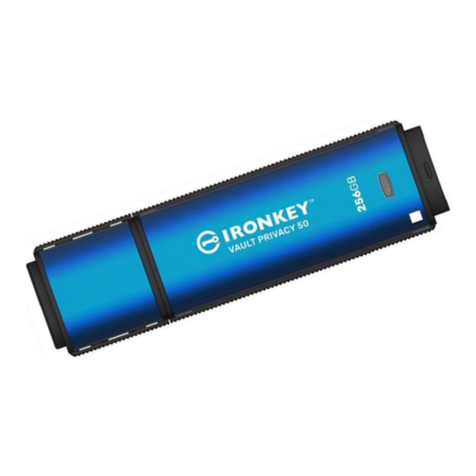
Kingston Technology
Kingston Technology IRONKEY Vault Privacy 50 user guide
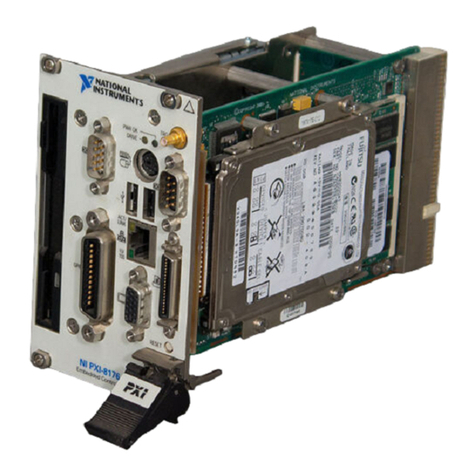
National Instruments
National Instruments PXI NI 8171 Series user manual
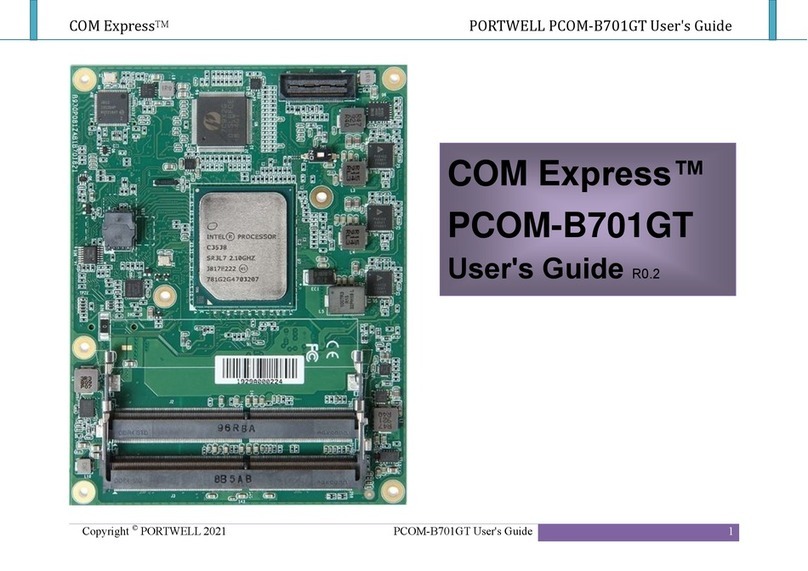
Portwell
Portwell COM Express PCOM-B701GT user guide
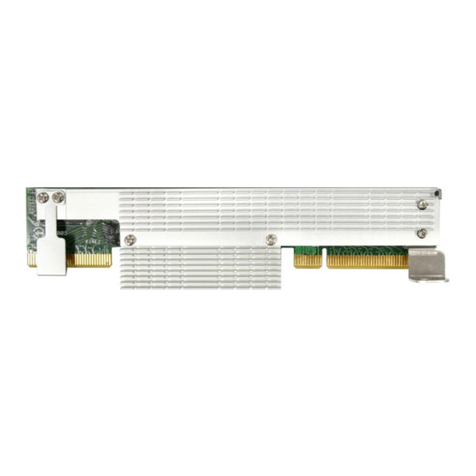
Asus
Asus PIKE 2008 IMR user guide
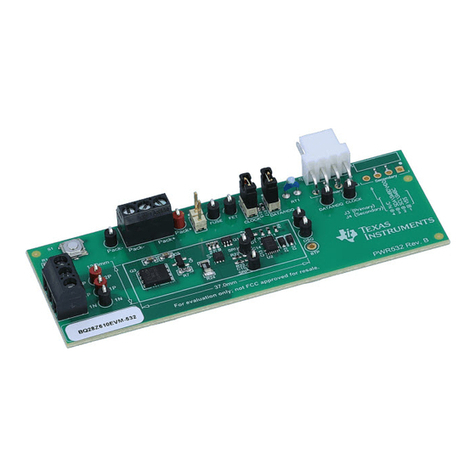
Texas Instruments
Texas Instruments BQ28Z610-R2 Technical reference manual

Quanser
Quanser QNET 2.0 HVAC quick start guide

